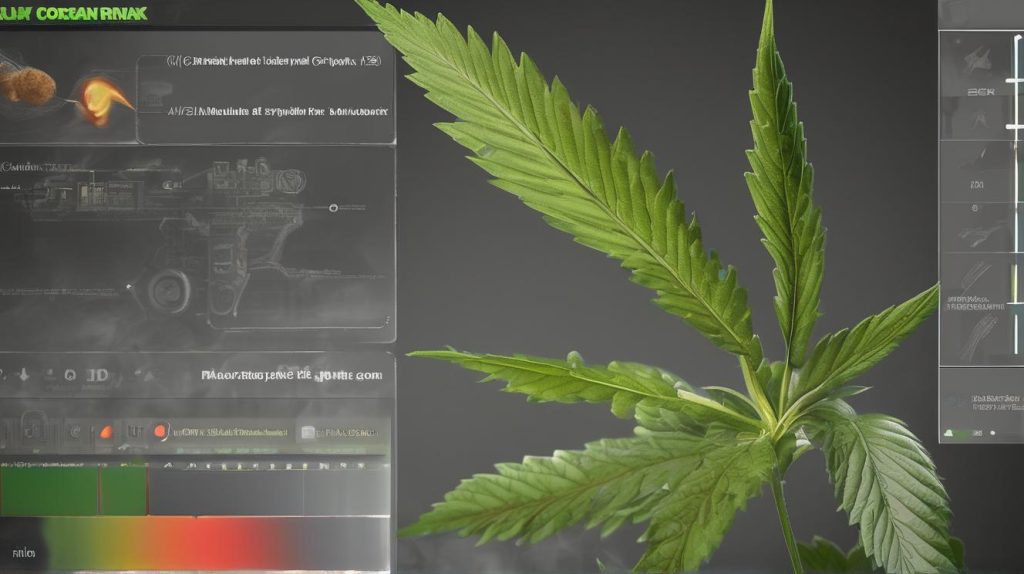
Embarking on a cannabis journey can often feel overwhelming, especially when confronted with terms like TAC or ‘total active cannabinoids.’ If you’ve ever felt overwhelmed while trying to decipher your cannabis product label, you’re not alone. In the expanding world of cannabis, understanding these terms can significantly enhance your cannabis experience. TAC stands for ‘total active cannabinoids,’ a term that includes all active compounds in a cannabis product. Different cannabinoids in cannabis have other effects, making it crucial for users to understand TAC. This article will delve into what TAC weed is and why it plays such a pivotal role in influencing the overall impact of your cannabis product.
Decoding TAC: An Insight into Total Active Cannabinoids
TAC is a collective term that represents all the active cannabinoids in a cannabis product. It clearly indicates the concentration and potency of the cannabinoids present, providing users with a comprehensive understanding of the product’s overall cannabinoid profile.
Understanding TAC is critical because different cannabinoids in cannabis have varying effects. For instance, THC (Tetrahydrocannabinol) is renowned for its psychoactive properties, while CBD (Cannabidiol) is celebrated for its potential therapeutic benefits. The combined influence of these cannabinoids, often referred to as the ‘entourage effect,’ can significantly shape your cannabis experience.
So, the next time you pick up a cannabis product, pay close attention to the TAC value. This single figure can provide a wealth of information about the product’s composition and potential impact, helping you make informed decisions about cannabis consumption. Remember, a higher TAC doesn’t necessarily mean a better product—it’s the balance and combination of total active cannabinoids that genuinely matter.
The Role of TAC in Shaping the Entourage Effect
The entourage effect is a concept that refers to the synergistic interplay of various cannabinoids, terpenes, and other compounds in cannabis. These combined components can enhance the product’s overall effects compared to consuming any single compound individually.
TAC plays a significant role in shaping this effect. As it represents the total concentration of all active cannabinoids in a cannabis product, it provides a broader understanding of the product’s potential impact. This total includes not just the well-known THC and CBD but also other less renowned but equally essential cannabinoids.
Distinguishing Between TAC: Total Active Cannabinoids and Total Aerobic Count
In our article, “Distinguishing Between TAC: Total Active Cannabinoids and Total Aerobic Count,” we aim to clarify the difference between two commonly used acronyms in the cannabis and microbiology fields.
TAC, when referred to in a cannabis context, stands for Total Active Cannabinoids. This value represents the sum of all active cannabinoids present in a cannabis product. It offers a comprehensive understanding of the product’s potential effects, considering not just well-known cannabinoids like THC and CBD but also other less renowned but equally important ones.
On the other hand, TAC in the field of microbiology denotes the Total Aerobic Count. This refers to the total number of aerobic bacteria in a sample, typically used to evaluate the microbial quality of food or pharmaceutical products.
While both acronyms are essential in their respective fields, it’s crucial to understand the context to interpret ‘TAC’ correctly. This article highlights the importance of an in-depth understanding of these terms to ensure accurate communication and comprehension.
Conclusion
TAC (Total Active Cannabinoids) and THC (Tetrahydrocannabinol) are both vital components in understanding the potency of cannabis. While THC is a single compound known for its psychoactive effects, TAC represents a broader view of the cannabis product, accounting for the total amount of active cannabinoids present. This includes not only THC but also other cannabinoids like CBD, CBN, and more. Knowledge of both TAC and THC is crucial when reading dispensary labels as it provides a comprehensive understanding of the product’s potency and potential effects.



